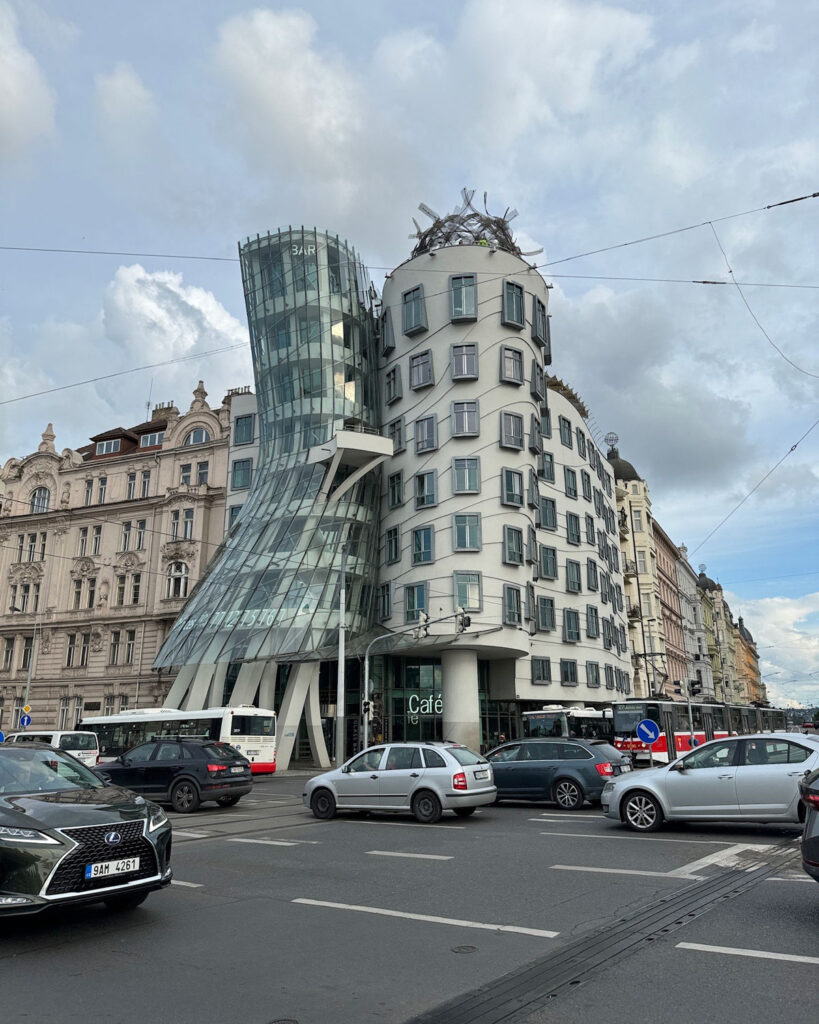
Leslie Van Duzer’s Art and Architecture Study Abroad experience offered 21 SALA undergraduate and graduate students a rich opportunity to understand the intersection of history, art, and architecture in Central Europe from the mid-19th century to the present day. Over the course of three weeks in May-June, in the beautiful cities of Prague, Pilsen, Brno, Vienna, and Ljubljana, students engaged directly with historical contexts such as old town squares, history-rich castles and palaces, expansive gardens, grand churches, and excellent museums and galleries. Exploring these venues on foot allowed the group to connect with history and to see how it shaped the architecture of those cities.
In Central Europe, the class discovered that art is an integral aspect of architectural design. From city centers rich with statues, murals, and fountains, to the facades of important public buildings, from the ornate frescoes, stained glass, and altars in churches and to contemporary murals, the group saw countless examples of how architecture and art together create a sense of place and identity. The course also fostered a much deeper understanding of the transformative influences on Central European art and architecture of renowned architects and artists such as Adolf Loos, Otto Wagner, Jan Kotera, Mies van der Rohe, Gottfried Semper, and Jože Plečnik.
The Art and Architecture Study Abroad also provided students with an opportunity to engage with contemporary architecture through visits to diverse housing models, waterfront infrastructure and development, adaptive reuse projects, and beautifully designed interiors. This allowed the class to consider how to balance innovation with sensitivity to historical context.



The course featured eight full days in the Czech Republic – six in Prague including one free day, and a day each in Pilsen and Brno. Highlights from the Czech Republic included:
- Queen Anne’s Summer Palace and the New Orangery
- Prague Castle and Jože Plečnik’s numerous interventions
- The opulent Baroque St. Nicholas Church
- A tour of the UMPRIUM Technology Workshop with the architect
- The Vltava Embankment (adaptive reuse of ice storage vaults to cafes and shops) and the famous Dancing House by Frank Gehry
- Haus Brummel and Apartment Kraus, as well as the group Pilsner Urquell Brewery Tour
- Leslie’s personal tour of Villa Müller
- Villa Tugendhat in Brno
The course then took the group to the neighbouring country Austria for another eight full days. Highlights from Vienna included:
- Votiv Kirche, a neo-gothic church
- The Australian Parliament
- The 1st District with its various façades
- A cocktail at the American Bar
- Kunsthiorische Museum or the National History Museum
- The Museum Quartier with select museum visits
- Werkbundsiedlung
- St. Stephens Attic and its roof top
The last four days of the course were spent in Slovenia. Highlights from Ljubljana included:
- Jože Plečnik’s house and studio
- The myriad of Jože Plečnik interventions throughout the city
- The National and University Library
- A tour by Dr. Damjan Prelovsek (grandson of the mayor who hired Jože Plečnik as the city architect) of his house which was renovated by Plečnik
- The unique Church of St. Michael and Žale Cemetery
Our days would typically involve meeting at a specific destination of interest at 10am and then stopping at other sites within walking distance. Independent lunch times would be scheduled in the early afternoons. Other apartment tours, museums, or galleries would fill the mid-late afternoons and even into the early evenings. Free time was also scheduled in the afternoons, evenings or full days when traveling between cities to allow students to pursue their own personal explorations.
The course included three pre-trip seminars in February-March to introduce themes, background, context, and to review the itinerary. The final project assignment required students to identify five typologies (i.e. doorknobs, lampposts, spooky spaces, deceptive materials) they repeatedly encountered throughout the entire trip and create a photo collection of six to nine examples of each. A set of rules was to be established for each type with selected photos being accompanied by a short, written text of reflections on the comparisons. The projects are currently exhibited in Lasserre in the 2nd floor hallway. The trip was a highlight of the summer and an experience that will be remembered for a lifetime.
Story by Lily Reid, 4th year Bachelor of Design.